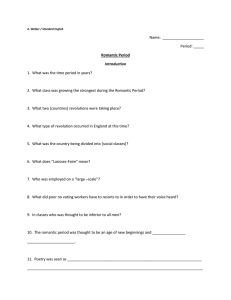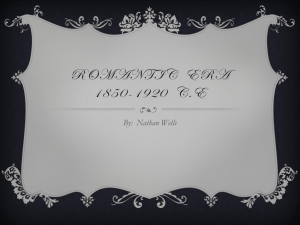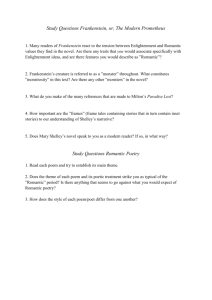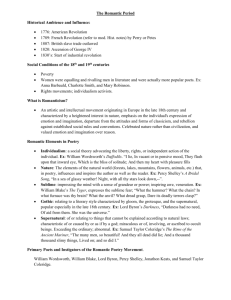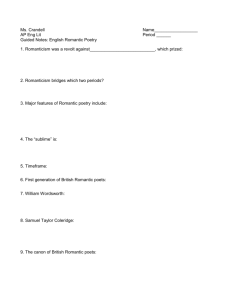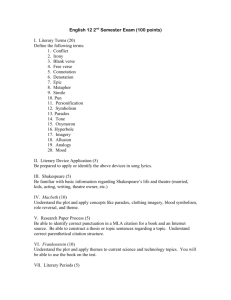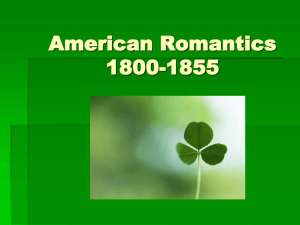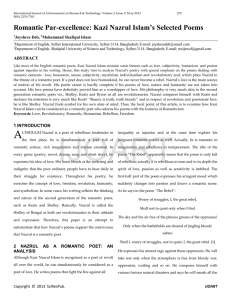The Romantic Era
advertisement
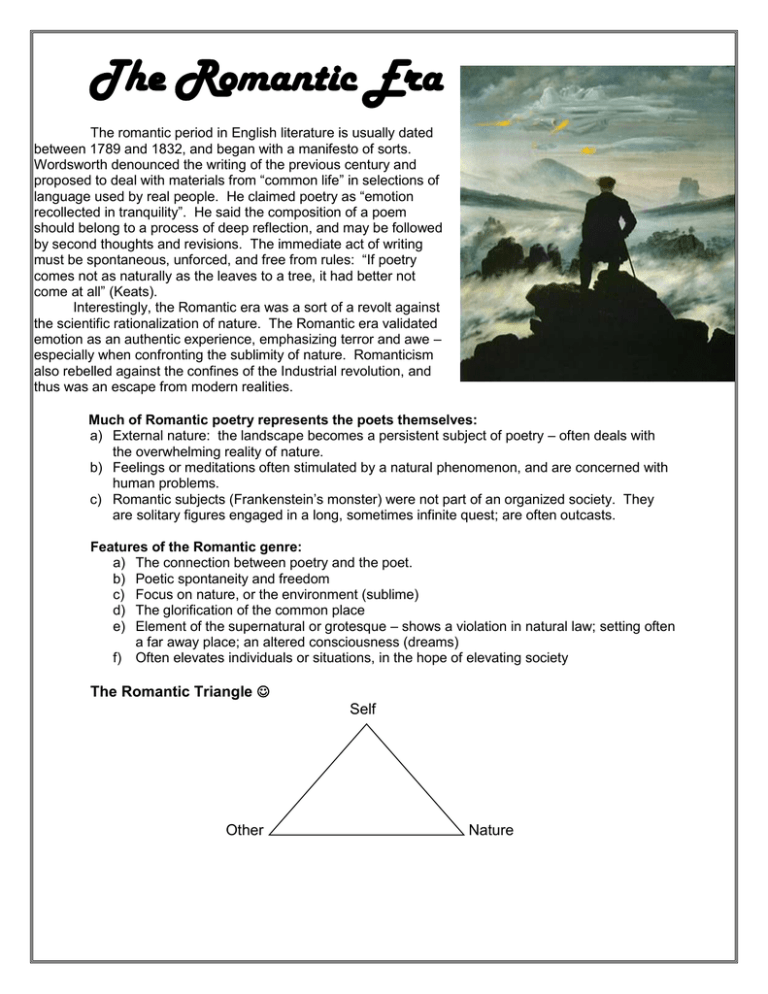
The Romantic Era The romantic period in English literature is usually dated between 1789 and 1832, and began with a manifesto of sorts. Wordsworth denounced the writing of the previous century and proposed to deal with materials from “common life” in selections of language used by real people. He claimed poetry as “emotion recollected in tranquility”. He said the composition of a poem should belong to a process of deep reflection, and may be followed by second thoughts and revisions. The immediate act of writing must be spontaneous, unforced, and free from rules: “If poetry comes not as naturally as the leaves to a tree, it had better not come at all” (Keats). Interestingly, the Romantic era was a sort of a revolt against the scientific rationalization of nature. The Romantic era validated emotion as an authentic experience, emphasizing terror and awe – especially when confronting the sublimity of nature. Romanticism also rebelled against the confines of the Industrial revolution, and thus was an escape from modern realities. Much of Romantic poetry represents the poets themselves: a) External nature: the landscape becomes a persistent subject of poetry – often deals with the overwhelming reality of nature. b) Feelings or meditations often stimulated by a natural phenomenon, and are concerned with human problems. c) Romantic subjects (Frankenstein’s monster) were not part of an organized society. They are solitary figures engaged in a long, sometimes infinite quest; are often outcasts. Features of the Romantic genre: a) The connection between poetry and the poet. b) Poetic spontaneity and freedom c) Focus on nature, or the environment (sublime) d) The glorification of the common place e) Element of the supernatural or grotesque – shows a violation in natural law; setting often a far away place; an altered consciousness (dreams) f) Often elevates individuals or situations, in the hope of elevating society The Romantic Triangle Self Other Nature
